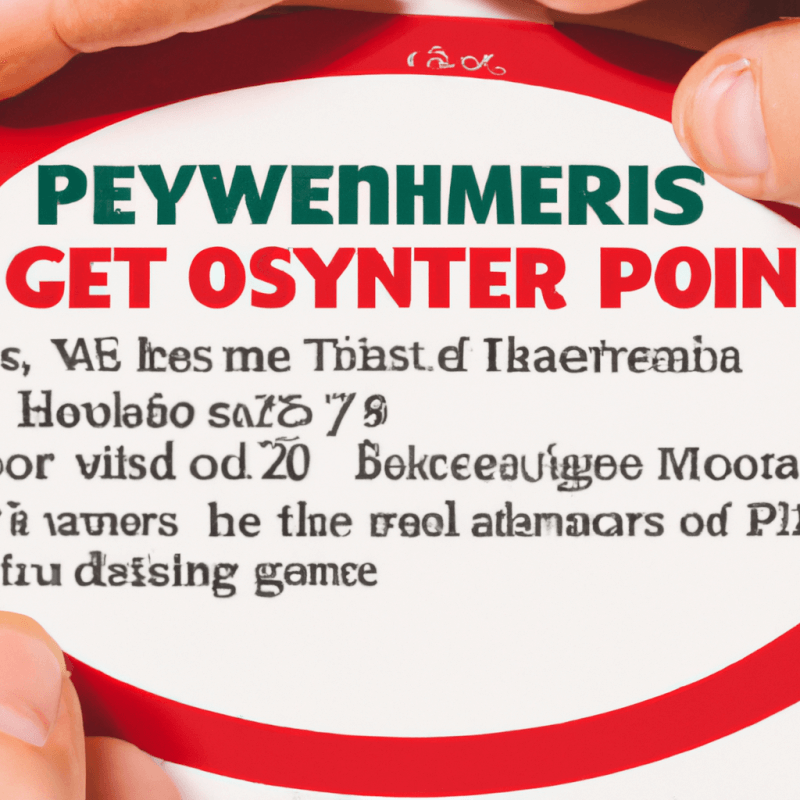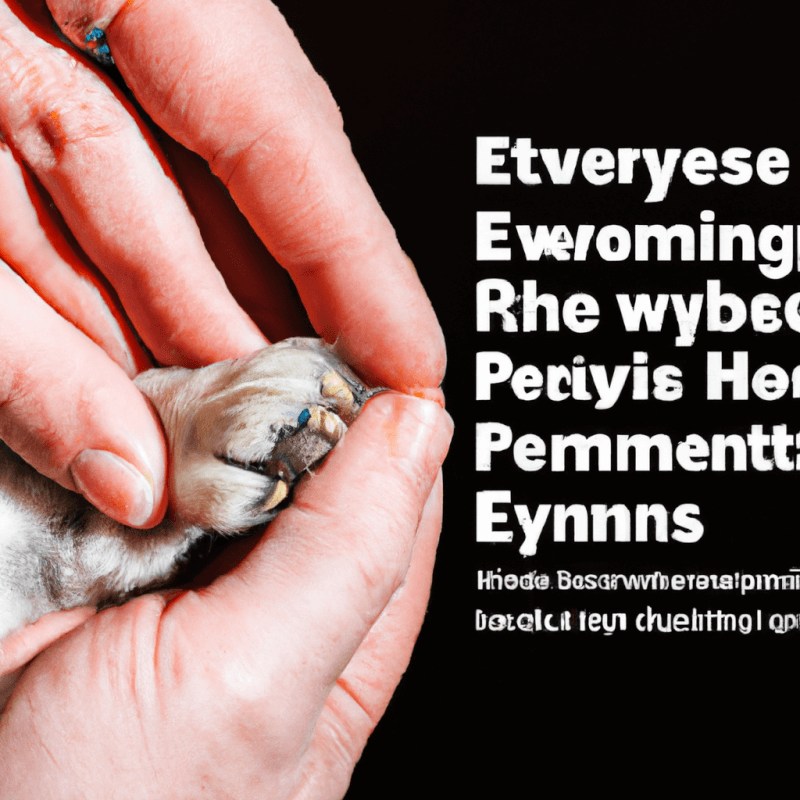Imagine this scenario: you’re sitting in your living room, enjoying a peaceful evening with your beloved pet by your side. Suddenly, you notice that they have gotten into something they shouldn’t have. Panic starts to set in as you realize that it could be toxic. What should you do now? Don’t worry, we’ve got you covered. In this article, we will guide you through the necessary steps to take if your pet ingests something potentially harmful. From identifying the signs to seeking immediate help, you will be armed with the knowledge to handle this situation calmly and effectively.

Recognizing the Signs of Toxicity
Observing abnormal behavior
As a responsible pet owner, it is important to be able to recognize the signs of toxicity in your furry friend. One of the first indicators is abnormal behavior. If your pet suddenly becomes lethargic, agitated, unresponsive, or displays any other unusual behavior, it could be a sign that they have ingested something toxic.
Ready for Cat Trivia?
Test your knowledge about cats!

Noticing gastrointestinal symptoms
Gastrointestinal symptoms are another common sign of toxicity in pets. Vomiting, diarrhea, excessive drooling, and loss of appetite are all indicators that there may be something toxic in your pet’s system. It’s important to pay attention to their stools as well, as abnormalities such as blood or unusual color can also point to a toxin.
Looking for neurological symptoms
Neurological symptoms may indicate that your pet has ingested a toxic substance. These symptoms can include seizures, tremors, uncoordinated movements, weakness, or even coma. If you notice any of these signs, it is crucial to seek immediate veterinary attention.
Identifying symptoms of systemic toxicity
Systemic toxicity refers to the impact of a toxic substance on the entire body. Some common symptoms of systemic toxicity in pets include difficulty breathing, rapid heartbeat, pale gums, collapse, and shock. These symptoms can be life-threatening and require immediate medical intervention.
Noting specific symptoms related to certain toxins
Different toxins can have specific symptoms associated with them. For example, if your pet has encountered a toxic plant, they may show symptoms such as drooling, vomiting, difficulty swallowing, or swollen lips. Understanding the specific symptoms associated with different toxins can help you provide better information to your veterinarian.
Immediate Actions
Keep calm and assess the situation
The first step when you suspect your pet has ingested something toxic is to stay calm. Panicking can only make the situation worse. Take a moment to assess the situation and gather as much information as possible about the potential toxin your pet has been exposed to.
Do not induce vomiting without professional advice
While inducing vomiting may seem like a logical first step, it is crucial to consult a veterinarian or a pet poison hotline before doing so. Certain substances can cause more harm when brought back up, and there are specific protocols for inducing vomiting that should be followed under professional guidance.
Contact a veterinarian or a pet poison hotline immediately
Time is of the essence when it comes to toxic ingestion in pets. Contact your veterinarian or a pet poison hotline immediately for guidance. These professionals are trained to provide accurate and timely advice on how to proceed and can help you take the appropriate next steps.
Provide necessary information about the pet and the toxin
When seeking assistance from a veterinarian or a pet poison hotline, be prepared to provide important information about your pet and the toxin they may have ingested. Details such as your pet’s species, breed, weight, and age are crucial for accurate advice. Additionally, provide as much information as possible about the potential toxin, including its name, quantity, and how long ago the ingestion occurred.
Home Treatment Measures
Follow specific instructions given by the veterinarian
After contacting a veterinarian or a pet poison hotline, you may receive specific instructions based on the type of toxin and your pet’s condition. It is essential to follow these instructions carefully. They may include actions such as administering activated charcoal, providing supportive care, or monitoring your pet closely for changes in their condition.
Try to collect a sample of the vomit or stool
If your pet has vomited or had a bowel movement after ingesting the toxin, try to collect a small sample of it for examination. This can be helpful for identifying the toxin and guiding the treatment plan. Place the sample in a sealed container and bring it with you when seeking veterinary assistance.
Prevent further exposure to the toxin
Take immediate steps to prevent your pet from further exposure to the toxin. If it is a household cleaning product, remove your pet from the area and ensure proper ventilation. If it is a toxic plant, remove it from their reach. Sealing off any areas that may contain the toxin can help prevent additional ingestion.
Promote hydration and dilution of the toxin
In certain cases, promoting hydration and dilution of the toxin can aid in the elimination process. Encourage your pet to drink water, or as directed by a veterinarian, offer them a special solution to help flush out the toxin. This can be particularly helpful if the toxin is concentrated and needs to be diluted in the body.
Monitor the pet closely for any changes or worsening of symptoms
While administering home treatment measures, it is crucial to closely monitor your pet for any changes in their condition. Keep an eye out for worsening symptoms, new symptoms, or any signs that indicate the need for immediate medical attention. A sudden deterioration in your pet’s health should not be ignored.
Do not administer any over-the-counter remedies without professional guidance
It is essential to avoid administering any over-the-counter remedies without professional guidance. Certain medications or treatments meant for humans can be highly toxic to pets and may do more harm than good. Always seek the advice of a veterinarian before giving your pet any type of medication or treatment.
Common Household Toxins for Pets
Human medications
Human medications, including prescription drugs and over-the-counter medications, can be extremely dangerous for pets. Pain relievers, antidepressants, and even common NSAIDs like ibuprofen can cause severe complications if ingested by a pet. Always securely store medications and keep them out of your pet’s reach.
Household cleaning products
Household cleaning products, such as bleach, disinfectants, and detergents, are common culprits of pet toxicity. These products often contain chemicals that can cause gastrointestinal upset, respiratory distress, and even chemical burns if ingested or exposed to a pet’s skin. Be cautious when using these products and ensure that your pet is kept away from areas where they are being used.
Certain foods toxic to pets
Some human foods are toxic to pets and can cause severe illness or even death. Chocolate, grapes, onions, garlic, and xylitol (an artificial sweetener) are just a few examples of foods that can be dangerous for pets. It is vital to educate yourself on foods that are toxic to your specific pet and ensure they are kept out of their reach.
Plants and garden products
Many common household plants and garden products can be toxic to pets. Lilies, azaleas, daffodils, and sago palms are just a few examples of plants that can cause severe reactions if ingested. Additionally, certain gardening products, such as insecticides and fertilizers, can be harmful to pets. Ensure that your indoor and outdoor environments are pet-proofed and free from toxic plants and products.
Insecticides and pesticides
Insecticides and pesticides are designed to kill insects and pests, but they can also be highly toxic to pets. Follow label instructions carefully when using these products and never use them in areas accessible to your pets. It’s also important to keep an eye out for signs of pest infestations as some pet owners may resort to using toxic substances to address the issue.
Rodenticides and baits
Rodenticides and baits are commonly used to control rodent populations, but they can pose a serious danger to pets. These products are designed to attract rodents, making them tempting to curious pets. However, ingesting rodenticides can lead to internal bleeding, seizures, and even death. When using these products, ensure they are placed in areas that are inaccessible to your pets.
Chemicals in automotive products
Many automotive products, such as antifreeze, motor oil, and windshield washer fluid, contain chemicals that are toxic to pets. Even a small amount of antifreeze can be fatal if ingested. Ensure that these products are securely stored in a locked cabinet or in a location where your pet cannot access them.
Toxic substances in cosmetics and personal care items
Cosmetics and personal care items, such as makeup, lotions, and perfumes, may contain ingredients that are toxic to pets. Fragrances, essential oils, and certain chemicals can cause skin irritation, gastrointestinal upset, and even organ damage if ingested by a pet. Store these items securely and be cautious when using them around your pets.

First Aid for Specific Toxicities
Chocolate poisoning
Chocolate poisoning is a common issue in pets, especially dogs. Theobromine, a compound found in chocolate, can be toxic to animals. If your pet has ingested chocolate, contact your veterinarian or a pet poison hotline immediately. They will guide you on what steps to take based on the amount and type of chocolate consumed.
Xylitol toxicity
Xylitol, an artificial sweetener, is highly toxic to pets, particularly dogs. It can be found in gum, candy, baked goods, and even some oral health products. If your pet ingests anything containing xylitol, seek immediate veterinary care. Xylitol ingestion can cause a rapid drop in blood sugar levels and, in severe cases, liver failure.
Antifreeze ingestion
Antifreeze contains ethylene glycol, a substance that is extremely toxic to pets. Even a small amount can be lethal. If you suspect your pet has ingested antifreeze, it is a medical emergency and requires immediate veterinary attention. Early detection and treatment are crucial for a positive outcome.
Poisonous plant consumption
If your pet has ingested a poisonous plant, it is important to identify the plant and contact a veterinarian or a pet poison hotline right away. Different plants can cause different reactions, ranging from mild gastrointestinal upset to organ failure. The sooner professional help is sought, the better the chances for a successful treatment.
Medication overdose
Accidental medication overdose can occur if pets are accidentally given the wrong dosage of medication or if they have managed to access their own medications. It is essential to keep all medications securely stored and out of your pet’s reach. If an overdose occurs, contact your veterinarian immediately for guidance.
Bleach or cleaning product ingestion
If your pet has ingested bleach or a cleaning product, it is vital to seek veterinary advice. These products can cause severe gastrointestinal issues, chemical burns, and respiratory distress. Never induce vomiting without professional guidance, as some cleaning products can cause more harm if brought back up.
Preventing Toxicity in Pets
Understanding common pet hazards
Educating yourself about common pet hazards is the first step in preventing toxicity in your furry friend. By understanding which plants, foods, and substances are toxic to pets, you can take proactive measures to keep them out of harm’s way.
Keeping toxic substances securely stored
Proper storage of toxic substances is crucial for maintaining the safety of your pets. Ensure that household cleaning products, medications, and other potentially dangerous substances are kept securely locked away or stored in cabinets that are out of your pet’s reach.
Ensuring pet-proofing indoor and outdoor environments
Pet-proofing both indoor and outdoor environments is essential for preventing toxicity. Remove any toxic plants from indoor spaces and create safe areas for your pet to roam without access to toxic substances. Outdoors, ensure that your pet cannot access areas where garden products or toxic plants may be present.
Using pet-safe alternatives
Whenever possible, opt for pet-safe alternatives to products that may be harmful to your furry friend. There are pet-friendly cleaning products, pest control alternatives, and even non-toxic plants that can help create a safe and healthy environment for your pet.
Properly disposing of hazardous waste
When disposing of hazardous waste, such as medications, cleaning products, or automotive fluids, it is crucial to do so safely. Follow local regulations for proper disposal methods, and never pour substances down the drain or throw them in the trash where your pet could potentially be exposed to them.

When to Seek Emergency Veterinary Care
Pet exhibiting severe symptoms
If your pet is exhibiting severe symptoms such as seizures, difficulty breathing, or collapse, it is crucial to seek emergency veterinary care immediately. These symptoms can indicate a life-threatening situation and require immediate medical attention.
Unconscious or unresponsive pet
An unconscious or unresponsive pet is a medical emergency. Check for breathing and a heartbeat, and if necessary, perform CPR as directed by a veterinarian. Transport your pet to a veterinary clinic immediately, as time is of the essence in these situations.
Breathing difficulties
Difficulty breathing in pets can be a sign of a serious problem. If your pet is struggling to breathe, shows labored breathing, or exhibits signs of respiratory distress, it is important to seek immediate veterinary care.
Known ingestion of highly toxic substances
If you know or suspect that your pet has ingested a highly toxic substance such as rat poison, antifreeze, or a large quantity of medication, do not wait for symptoms to develop. Contact a veterinarian or a pet poison hotline immediately for guidance on how to proceed.
Recurrent vomiting or uncontrollable diarrhea
Recurrent vomiting or uncontrollable diarrhea can be a sign of toxicity or a serious underlying issue. If your pet is experiencing these symptoms repeatedly or continuously, it is important to seek veterinary attention. Dehydration and electrolyte imbalances can occur quickly and worsen the situation.
Pet in a distressed or critical condition
If your pet is in a visibly distressed or critical condition, it is crucial to seek emergency veterinary care. Trust your instincts as a pet owner and act quickly to ensure that your furry friend receives the urgent medical attention they need.
Consulting a Veterinarian
Discussing potential treatment options
When consulting a veterinarian, they will assess your pet’s condition and discuss potential treatment options with you. This may include medication, supportive care, hospitalization, or even emergency procedures. By actively participating in the conversation, you can make an informed decision regarding your pet’s care.
Performing diagnostic tests and examinations
In order to accurately diagnose and treat your pet, a veterinarian may perform various diagnostic tests and examinations. These can include blood tests, imaging, or other specialized tests depending on your pet’s symptoms and suspected toxin. These tests will help determine the best course of treatment.
Monitoring and managing ongoing complications
Depending on the severity of the toxicity, ongoing monitoring and management of complications may be necessary. Your veterinarian will guide you through the process and ensure that your pet receives the appropriate care and support throughout their recovery.
Follow-up care and guidance
After the initial treatment, your veterinarian may recommend follow-up care and guidance to ensure your pet’s full recovery. This may include medication schedules, dietary restrictions, or additional check-up appointments. It is important to follow these instructions carefully for the well-being of your pet.

The Role of Pet Poison Control Hotlines
Available resources and services
Pet poison control hotlines are invaluable resources for pet owners facing a toxic exposure situation. They provide access to trained professionals who can offer guidance, support, and immediate advice on how to handle the specific toxin your pet has been exposed to.
Emergency guidance and support
In emergency situations, pet poison control hotlines can offer real-time guidance and support. They can assess the severity of the situation, help you determine whether immediate veterinary care is needed, and provide immediate first aid instructions to stabilize your pet until you can reach a veterinarian.
Providing essential information to the hotline
When contacting a pet poison control hotline, it is essential to provide accurate and detailed information about your pet and the suspected toxin. This will help the hotline professionals make the most informed decisions and provide appropriate advice. Be prepared to provide your pet’s breed, weight, age, and any known information about the toxin.
Conclusion
Being aware of the signs of toxicity in pets is crucial for every pet owner. By recognizing abnormal behavior, gastrointestinal symptoms, neurological symptoms, and signs of systemic toxicity, you can take immediate action to help your beloved companion. It is important to stay calm, seek professional guidance, and follow the appropriate treatment measures. Preventing toxicity in pets involves understanding common household toxins, pet-proofing your environment, and using safe alternatives. Remember, if you suspect your pet has ingested something toxic, always consult a veterinarian or a pet poison hotline for immediate assistance. Your prompt actions can make a significant difference in your pet’s health and well-being.



